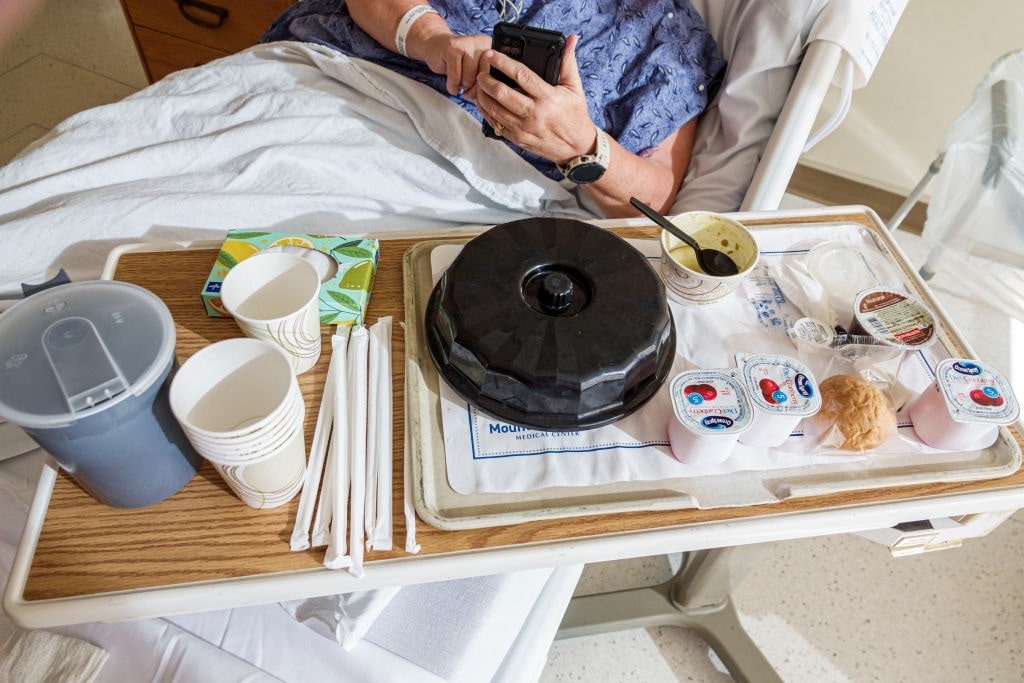As Canada’s surging euthanasia program continues to turn from morbid to horrific, the cause is exploding in popularity in the United States as well. But while the slippery slope is spiraling out of control north of the border, the machinery of physician-assisted suicide is just beginning to be meticulously constructed in America.
“Lawmakers in 19 states are debating legislation this year that would make it legal for a doctor to provide life-ending treatment for patients diagnosed with terminal illnesses,” The Daily Caller reported February 11. “Currently, assisted suicide is legal in the United States in Oregon, Washington state, California, New Mexico, Colorado, Montana, New Jersey, Vermont, Hawaii and Washington, DC.”
The math is jarring.

“Nearly half of the US is weighing bills that would make assisted suicide legal, showing signs that the debate among Americans regarding one’s ‘right to die’ is growing,” the conservative news site noted. “Despite continuing skepticism from the medical establishment, the controversial policy is gaining new momentum because of personal anecdotes, experience from states that were among the first to allow it, and changing attitudes partly driven by the [coronavirus] pandemic’s devastation,” Axios reported February 9.
It’s Not Euthanasia If You Swallow the Death Drugs Yourself
Proponents of what is carefully labeled as Medical Aid in Dying insist the practice is not physician-assisted suicide or euthanasia. Similar comforting words were trotted out for Canada’s identically named death protocols when the nation first legalized them in 2016. How are things going up there today? Canada was on the verge of allowing the mentally ill, drug addicts, and people with eating disorders to partake in MAiD as of March 17 before delaying the expansion in the face of intense criticism.
Compassion and Choices, a leading advocacy organization promoting the avalanche of legislation in states across the US, sees personal agency as the key to differentiating euthanasia and medical aid in dying.
“While both practices are designed to bring about a peaceful death, the distinction between the two comes down to who administers the means to that peaceful death,” the group explains on its website. “Euthanasia is an intentional act by which another person (not the dying person) administers the medication. By contrast medical aid in dying requires the patient to be able to take the medication themselves and therefore always remain in control. Euthanasia is illegal throughout the United States.”
American pro-MAiD activists are only focusing on what they state is terminal illness, but the justifications they cite provide strong evidence that the “right to die” won’t stop there.
“You have that very vivid reality in people’s minds that how one dies matters,” Compassion and Choices President Kim Callinan told Axios. She then added something significant. “As the baby boomers are retiring, the population of people that are older or wanting different options at the end of life – it’s an issue whose time has come,” Callinan asserted.
Dying on Their Own ‘Terms’
“Wanting different options” has an unmistakable consumerist ring to it – and with good reason. Compassion and Choices has not shied away from identifying physician-assisted suicide (but don’t call it that) as a service the market is now clamoring for.

(Photo by: Jeffrey Greenberg/Universal Images Group via Getty Images)
“Today, we call upon leaders within the medical, policy and palliative care communities to recognize the growing consumer movement,” Callinan and Compassion and Choices then-president Barbara Coombs Lee wrote in January 2017, two months after Colorado passed a ballot initiative allowing euthanasia.
“We call on them to unite around a new definition of ‘patient-centered care.’ A definition that respects patients’ values and priorities around death as paramount… even if they differ from those of the health care community,” the two activists continued.
As Axios stressed, “personal anecdotes” help the euthanasia cause gain “momentum.” And what better place is there to display those personal accounts than on the platforms of America’s most prominent media outlets?
“I Promised My Sister I Would Write About How She Chose to Die,” reads the headline to a December 28 op-ed in The New York Times.
“Dying on Lynda’s Terms” was the even more forthright headline to The Boston Globe’s January 26 feature piece.
Personal empowerment at the end of life was the overriding theme of both articles, and it was impossible not to notice the markedly progressive leanings of both subjects. NYT author Steven Petrow’s sister, Julie, duly acknowledged her white privilege before making her final exit:
“With the MAID request approved, Maddy, Julie’s [wife] of 35 years, picked up the prescription from a local pharmacy. The price: $900, which is not covered by Medicare, the Department of Veterans Affairs or many private insurance plans. A study published in The Journal of the American Geriatrics Society last year found that 96 percent of people who died by medical aid in dying were white and 72 percent had at least some college education.
“‘The reality is that communities of color, for a wide variety of reasons, also are more likely to utilize aggressive care and less likely to use other end-of-life care options, such as hospice and palliative care,’ explained [Compassion and Choice’s] Callinan. People without the resources to pursue MAID may be forced to make a different choice: suffer through a painful death or take matters into their own hands. ‘Be sure to include these statistics when you write about this,’ my sister directed me.”
Who knew Black Lives Matter includes the right to be euthanized by the state?
Connecticut resident Lynda Bluestein, The Globe detailed, was a Unitarian with a pronounced social activist streak. “She believed [MAiD] is a right anyone with a terminal illness should have, akin in importance to a woman’s right to choose whether to end a pregnancy,” the paper wrote.
“The mass shooting in Lewiston, Maine, shook her. As her days dwindled, the drumbeat of shootings, the overturning of Roe v. Wade, the state of the nation in general, weighed on her,” the exhaustively lengthy account later added.
“I now look back on so much of my advocacy as a lot of sound and fury that changed nothing,” Bluestein said in November, a couple of months before her chosen death date.
Is it wrong to point out that these aren’t your average Americans choosing assisted suicide? Staunchly progressive elderly baby boomers are ending their existences as dominant media organs lionize their departures and the activists helping them to do so paint it as a sign of a burgeoning new public demand.
That’s the stuff of organized campaigns.
Tragically, as can be seen with crystal clarity in Canada today, general communal respect for the sacredness of human life is diminished when individuals turn death into a form of personal autonomy.

